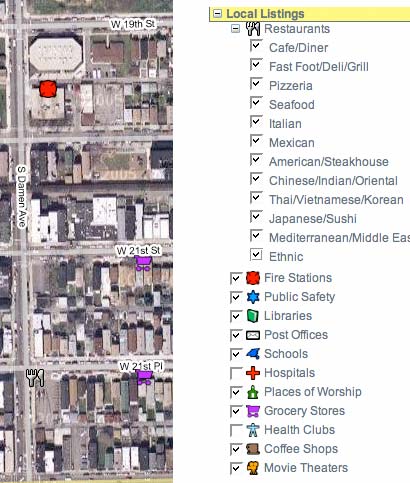3Dsolar is a budding collection of weather overlays and Landsat, USGS ortho, topo, and Modis rapid response map overlays wrapped into a neat network link. It doesn’t just update, but also updates itself with new overlays as they get added, as only network links can.
Big picture: If we take the Google-Earth-as-browser meme and run with it, then the network links are the equivalent to frequently updated websites. It’s surprising, then, that while we’ve seen a lot of individual hacks and proofs of concept that use server-side PHP or ASP to scrape RSS news feeds, say, or convert WML, companies have not yet taken to opening up shop on Google Earth. Where are the “portal” network links, of which 3D Solar is a kind of proof of concept?
Publishing for Google Earth via KML is not like using Google Maps, where terms and restrictions apply. Nobody needs a licence to publish for MS Internet Explorer either. (Imagine!) There is nothing keeping anyone from adding ads to their own Google Earth network links — if the content is compelling enough, the ads will be fine.
So does this mean that if the Yahoos and CNNs and BBCs don’t develop their own branded network links, the geek shall inherit the Google Earth by hack and by crack? (Language usage note: Sorry about that.)
They might, but here is the main problem: scalability. That one network link of the Space Shuttle and the International Space Station that I made still eats up not insignificant PHP processing power (60,000 hits in the last two weeks — half of the site total). Anyone making a successful portal network link needs to be allowed to make money off the content to pay for the servers. If you’re CNN you’re allowed to make money off your own stuff, but if you’re a hacker scraping CNNs content, you can’t, which limits your financial resources.
Of course, if Google were to produce some kind of hosted service for the server-side scripting that powers network links, (“2GB for Gmail, 2GHz for Google Earth”), then hacker creativity would suddenly be scalable, while Google gets to have yet another information flow to own, analyze and monetize. And it would make Google Earth even more compelling.
